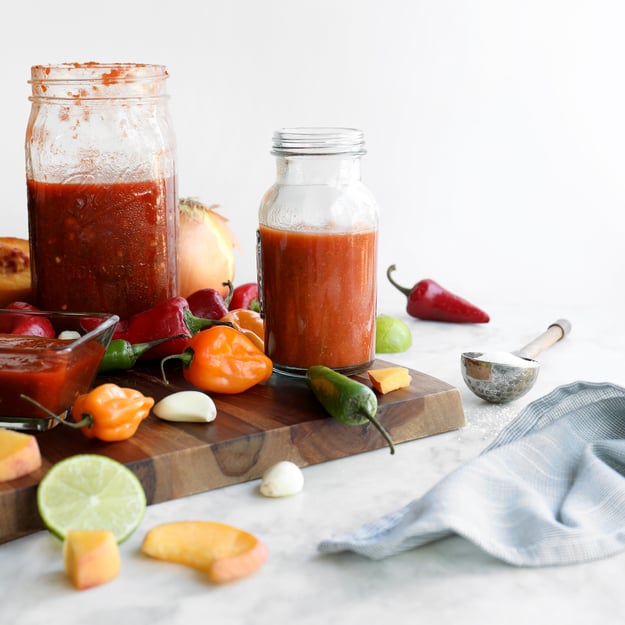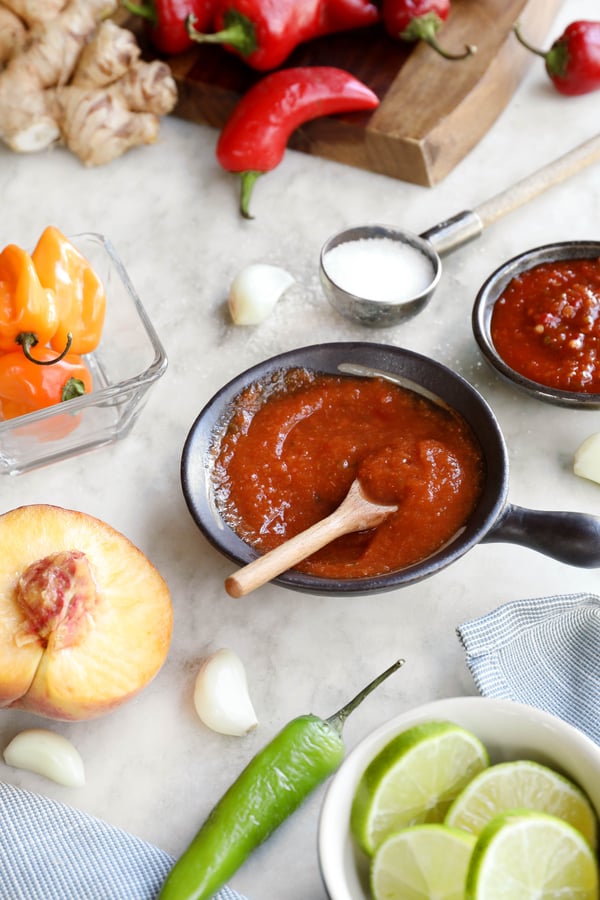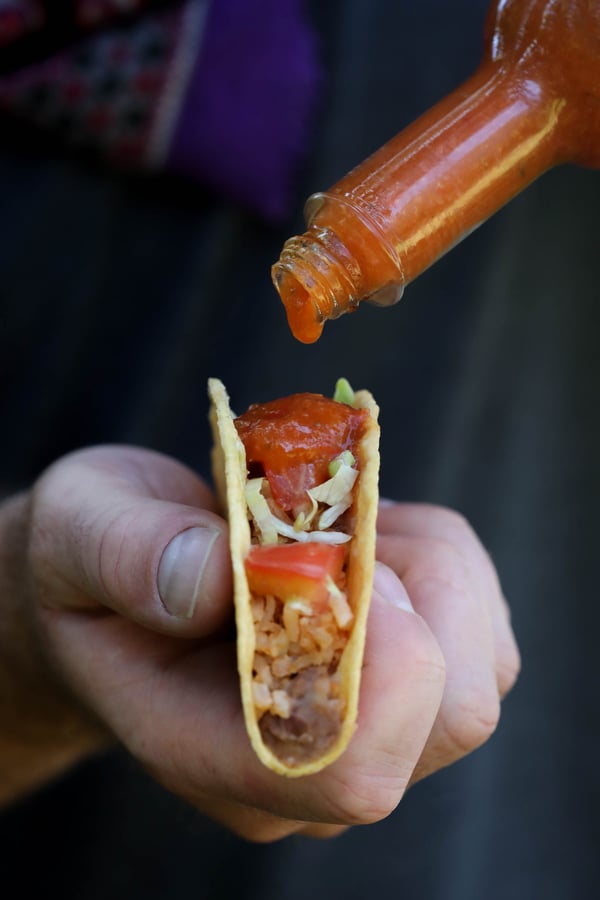I’m always striving to tweak and experiment with the food I consume. Whether that means attempting a new cuisine, trying seemingly odd and new (to me) ingredients, experimenting with herbs and spices, or delving further into the world of fermentation, the culinary arts are an endless source of inspiration, fun, and creativity.
Additionally, I’m also a bit of a hot sauce afficionado. One day it occurred to me, “Hey, I can ferment that”. Come to find out, a lot of the popular and long-standing traditional hot sauces on the market are indeed “aged”: in other words, fermented. After watching several YouTube tutorials and reading a handful of blog posts, I decided it was time to make my own fermented hot sauce.
What follows is a recipe, but I highly encourage you to experiment as much and as often as possible. I am by no means an expert in creating artisanal hot sauces. However, I’m intimate with my palette and spice tolerance, and I suggest you base your homemade hot sauce around what tickles your taste buds. I tend to get highly enthusiastic when discovering something new, so I declared that I would never purchase another pre-made hot sauce again! Realistically, that’s most likely not true. But I can guarantee that this is a permanent addition to my kitchen repertoire and gift giving. A special shoutout to my herbalist pal Jamie Scepkowski from Salmon River Apothecary for suggesting I add peaches to my recipe. Goodness gracious, that was a good call!
Homemade Fermented Hot Sauce
Makes about 1/2 gallon.
Ingredients
- 3/4-pounds organic red Fresno chili peppers
- 1/2-pound organic poblano peppers
- 1/2-pound organic serrano peppers
- 1/8-pound organic habanero peppers
- 48 oz. clean, filtered or bottled spring water
- 8 tsp. fine sea salt
- 1/2 organic yellow onion
- 5 cloves organic garlic
- 1 1-inch finger organic ginger root
- Juice of two organic limes
- 4 organic peaches
Directions
- Roughly chop all the peppers and toss into your fermentation vessel of choice.
- Pour water and salt (the brine) into the vessel.
- Weight down the peppers to keep submerged in the brine (see pro tips).
- Ferment the peppers for five-14 days (see pro tips below).
- After fermentation, strain out the peppers from the brine. Reserve brine for later use.
- Blend peppers, onion, garlic, ginger, lime juice, and peaches.
- Add additional brine to reach desired consistency.
- Use a fine mesh strainer and/or cheesecloth if you prefer a clearer hot sauce.
Pro Tips
- When handling the peppers, be sure to wear gloves and keep your hands away from your face.
- There are many fermentation vessels to choose from. I have a classic German sauerkraut crock, but even canning jars can work. You just need something to weight down the ingredients, so they’re submerged in the brine. My crock comes with specific clay weights, but I’ve seen people use bags of water, rocks, or ramekins. Get creative! The goal is to keep the peppers submerged in the brine, and to keep the air out. Preferably the air can escape the vessel, and not get back in.
- If a white, webby film appears on top of the brine during fermentation, simply skim off. This is a wild yeast called kahm yeast and it is perfectly safe to consume. That said, it’s best practice to remove as it can impart a less than ideal flavor. Be sure to search the internet for pictures of kahm yeast so you know what you’re looking for.
- In the directions I advise to ferment the peppers from five to 14 days. Really, this is up to you. I would recommend tasting the brine throughout the fermentation process to get an idea of what level of sour you prefer. The key to all of this is experiment! You may even need to throw out a batch. That would be unfortunate, but at least you’ll have learned something!
- If you were curious on the spiciness level of my end product, I’d say it was about 1000 Scoville Heat Units (SHU). This was based on my subjective opinion on comparing it to other popular hot sauce brands.
Variations
As I suggested previously, experiment! There are infinite possible fruits, herbs, and spices you can try. Here are some ingredients ideas that I’d like to include in future batches.
- Blackberries
- Bilberries
- Cardamom
- Cinnamon
- Cumin
- Elder berries
- Grains of paradise
- Hibiscus
- Honey
- Mango
- Maple syrup
- Orange
- Pineapple
- Roast cacao powder
- Smoked chili flakes
- Smoked paprika
- Turmeric
Looking for other recipes to spice up your life?
Try these Grilled Southwest Veggie Wraps with Abodo
You may also enjoy:














